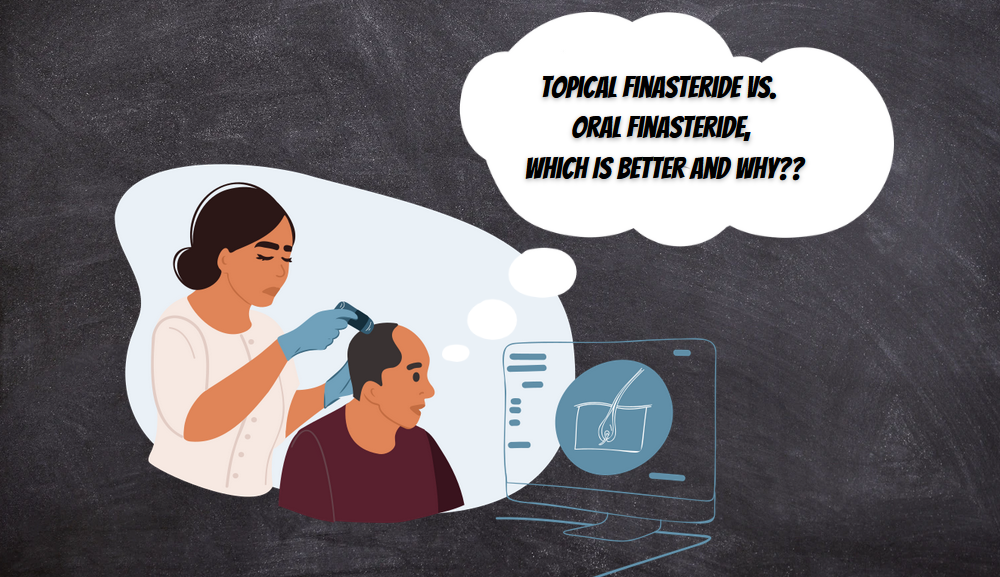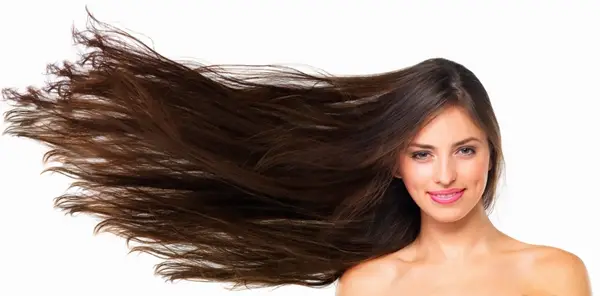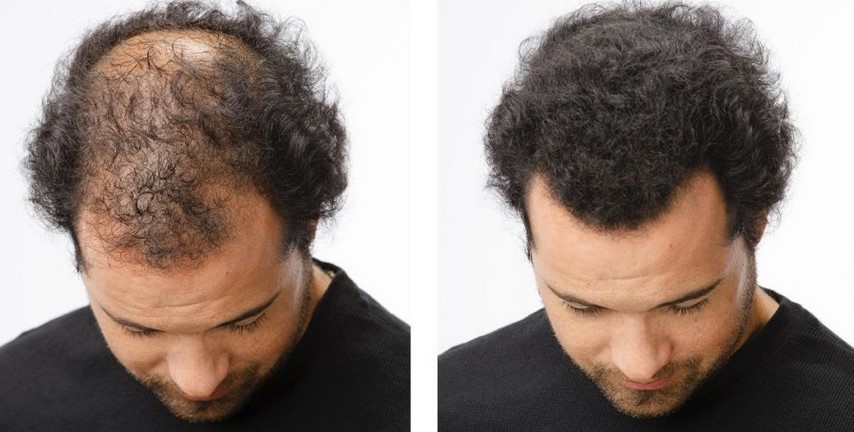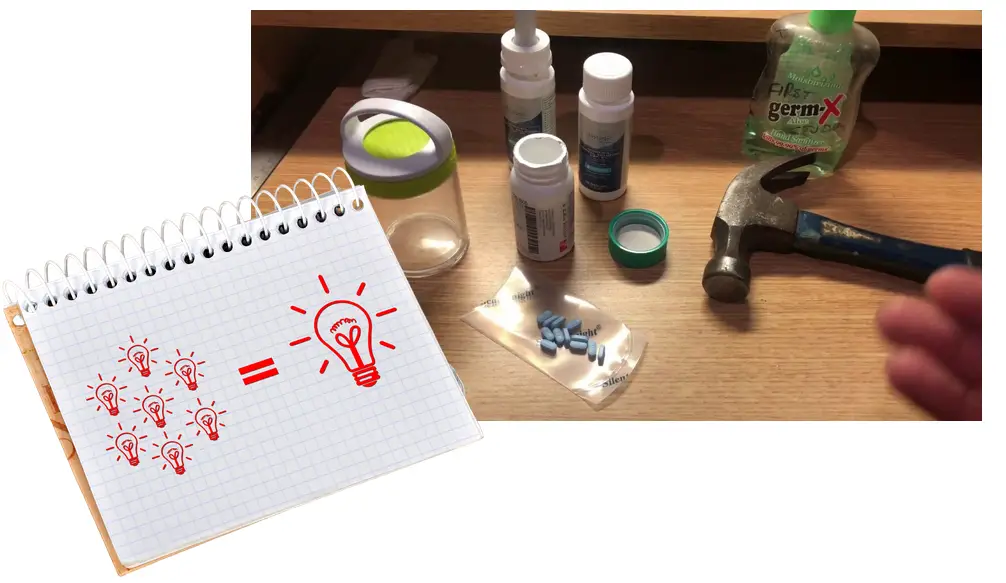Welcome to our comprehensive guide on topical finasteride vs oral finasteride. If you’re dealing with hair loss, you’ve likely come across these two treatments in your search for a solution. But what’s the difference between Finasteride Spray vs Pill, and which one is right for you? In this article, we’ll delve into the specifics of both treatments, compare their effectiveness, and help you make an informed decision.
Finasteride, whether applied topically or taken orally, is a popular treatment for hair loss. But these two methods of application can have different effects, benefits, and side effects. Understanding these differences is crucial in choosing the right treatment for you.
If you’re new to the world of hair loss treatments, you might want to start with understanding what finasteride is and how it works. You can find a detailed explanation in our article on Finasteride Prescription Online.
In the following sections, we’ll take a closer look at oral finasteride and topical finasteride, comparing their effectiveness, side effects, and convenience of use. We’ll also discuss other treatments for hair loss, such as minoxidil, and how they compare to finasteride.
Whether you’re just starting your journey to combat hair loss or looking to switch treatments, this guide will provide you with the information you need. So, let’s dive in and explore the world of topical finasteride vs oral finasteride.
Stay tuned, and don’t forget to check out our Hair Loss Products for a range of solutions to help you regain your confidence.
What is Finasteride?
Finasteride is a medication that’s widely used to treat hair loss, specifically a condition known as androgenetic alopecia, or male pattern baldness. It works by blocking the conversion of testosterone into dihydrotestosterone (DHT), a hormone that’s often linked to hair loss. By reducing the levels of DHT in the body, finasteride can slow down hair loss and even promote hair regrowth in some cases.
There are two main ways to use finasteride: orally and topically. Oral finasteride is taken as a pill, while topical finasteride is applied directly to the scalp. Both methods aim to reduce DHT levels and combat hair loss, but they do so in slightly different ways and can have different effects and side effects.
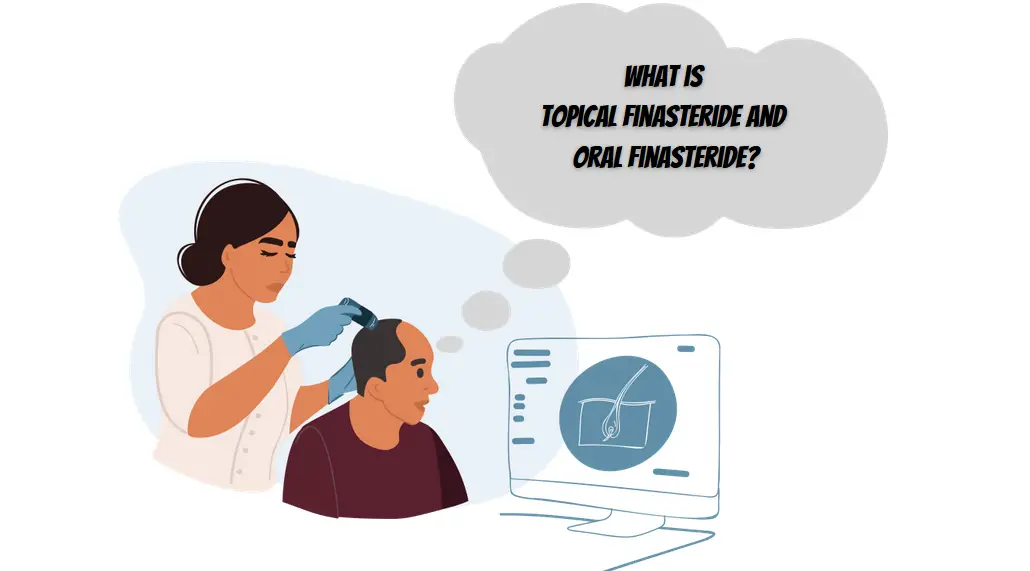
Oral finasteride, also known as Propecia or Proscar, is the more traditional form of the medication. It’s been approved by the FDA for the treatment of hair loss and is typically taken once a day. While it can be very effective, some people experience side effects such as decreased libido or sexual dysfunction.
On the other hand, topical finasteride is a newer form of the medication. It’s applied directly to the scalp, which allows it to target the hair follicles more directly. This can potentially reduce systemic side effects, making it a good option for those who have experienced side effects from oral finasteride. However, it’s worth noting that topical finasteride is not yet FDA-approved, although it is widely used and studied.
If you’re considering using finasteride for hair loss, it’s important to understand the pros and cons of both methods. In our Buy Finasteride Online guide, we delve deeper into the specifics of oral finasteride, including how to use it and what to expect.
In the next section, we’ll take a closer look at oral finasteride, discussing its effectiveness, side effects, and more. Whether you’re new to finasteride or considering switching from topical to oral, this section will provide you with the information you need.
Don’t forget to check out our Topical Finasteride and Minoxidil guide for more information on topical treatments for hair loss. Stay tuned!
Oral Finasteride: An Overview
Oral finasteride, also known by its brand names Propecia and Proscar, has been a cornerstone in the treatment of male pattern baldness for many years. It’s a systemic treatment, meaning it works throughout the body to inhibit the conversion of testosterone to dihydrotestosterone (DHT), a hormone that can cause hair follicles to shrink and eventually stop producing hair.
How It’s Used
Oral finasteride is typically taken as a 1mg pill once a day. Consistency is key with this treatment – it needs to be taken regularly for the best results. It’s also important to note that while some people may start seeing improvements within a few months, it can take up to a year to see the full effects.
Effectiveness
Numerous studies have shown the effectiveness of oral finasteride in treating hair loss. Most men who take it find that they lose fewer hairs, some men regrow lost hair, and for others, the balding process slows down. However, it’s important to remember that everyone’s experience with finasteride can be different.
Side Effects
While oral finasteride is generally well-tolerated, it can cause side effects in some people. These can include decreased libido, erectile dysfunction, and ejaculation disorders. These side effects are relatively rare and usually resolve once the medication is stopped. However, for those who do experience these side effects, they can be distressing.
If you’re considering oral finasteride for your hair loss, it’s important to weigh the potential benefits against the possible side effects. For a more detailed look at oral finasteride, including user experiences and tips for managing side effects, check out our guide on How to Buy Finasteride Online.
In the next section, we’ll explore topical finasteride – a newer form of the medication that’s applied directly to the scalp. This method of application can potentially reduce systemic side effects, making it an attractive option for those who have experienced side effects from oral finasteride.
Stay tuned for an in-depth look at topical finasteride, and don’t forget to check out our article on Provillus vs Propecia for a comparison of different hair loss treatments.
Remember, the journey to hair regrowth can be a long one, but with the right information and treatment, you can navigate it successfully. Keep reading to learn more about your options!
Topical Finasteride: An Overview
While oral finasteride has been a mainstay in hair loss treatment for years, topical finasteride is a newer option that’s gaining popularity. As the name suggests, topical finasteride is applied directly to the scalp, targeting the hair follicles more directly and potentially reducing systemic side effects.
You will also like: How to Make Topical Finasteride: A Step-by-Step Guide!
How It’s Used
Topical finasteride is typically applied to the scalp once a day. It’s available in various forms, including solutions, gels, and foams. The key to success with topical finasteride, much like its oral counterpart, is consistency. Regular application is crucial to see results.
Effectiveness
Studies have shown that topical finasteride can be as effective as oral finasteride in treating hair loss. It works by reducing DHT levels in the scalp, helping to slow down hair loss and potentially promote hair regrowth. However, as with any treatment, results can vary from person to person.
Side Effects
One of the main advantages of topical finasteride is its potential for reduced side effects. Because it’s applied directly to the scalp, less of the medication is absorbed into the body, which can result in fewer systemic side effects. However, some systemic absorption still occurs, and side effects, while rare, can still happen. These can include skin irritation at the application site and, in rare cases, the same sexual side effects seen with oral finasteride.
If you’re considering topical finasteride for your hair loss, it’s important to weigh the potential benefits against the possible side effects. For a more detailed look at topical finasteride, including user experiences and tips for managing side effects, check out our guide on Topical Finasteride and Minoxidil.
In the next section, we’ll put oral finasteride and topical finasteride head-to-head, comparing their effectiveness, side effects, and convenience of use. This comparison will help you make an informed decision about which treatment is right for you.
Stay tuned for a comprehensive comparison of oral and topical finasteride, and don’t forget to check out our article on Finasteride Natural Alternative for a look at other options for treating hair loss.
Remember, the journey to hair regrowth can be a long one, but with the right information and treatment, you can navigate it successfully. Keep reading to learn more about your options!
Topical vs Oral Finasteride: A Side-by-Side Comparison
When it comes to treating hair loss, both topical finasteride and oral finasteride have their advantages and potential drawbacks. Understanding these can help you make an informed decision about which treatment is right for you. Let’s take a closer look at how these two treatments compare.
Effectiveness
Both topical and oral finasteride work by reducing DHT levels, helping to slow down hair loss and potentially promote hair regrowth. Studies have shown that both forms of finasteride can be effective in treating hair loss. However, individual results can vary, and it can take up to a year to see the full effects of the treatment.
Side Effects
One of the main differences between topical and oral finasteride lies in their side effects. Oral finasteride can cause systemic side effects, including decreased libido, erectile dysfunction, and ejaculation disorders. These side effects are relatively rare and usually resolve once the medication is stopped.
On the other hand, because topical finasteride is applied directly to the scalp, less of the medication is absorbed into the body, potentially resulting in fewer systemic side effects. However, some systemic absorption still occurs, and side effects, while rare, can still happen. These can include skin irritation at the application site and, in rare cases, the same sexual side effects seen with oral finasteride.
Convenience of Use
Oral finasteride is taken as a pill once a day, making it a convenient option for many people. Topical finasteride, on the other hand, needs to be applied to the scalp, which can be more time-consuming and messy. However, for those who prefer a topical treatment or who have experienced side effects from oral finasteride, this can be a worthwhile trade-off.
Here’s a comparison table that outlines the pros, cons, and pricing of popular brand-name oral and topical finasteride products:
| Oral Finasteride (Propecia) | Topical Finasteride (Morr-F) | |
|---|---|---|
| Pros | – FDA-approved
– Convenient once-daily pill – Long track record of effectiveness |
– Applied directly to the scalp
– Potentially fewer systemic side effects – Can be combined with other topical treatments (like minoxidil) |
| Cons | – Potential for systemic side effects
– Must be taken indefinitely for continued effect |
– Not FDA-approved
– Daily application can be time-consuming – Less research available compared to oral finasteride |
| Pricing | – Typically around $70-$90 for a one-month supply | – Typically around $50-$70 for a one-month supply |
Please note that prices can vary based on factors like location, insurance coverage, and whether you’re purchasing a brand-name or generic product. Always check with your healthcare provider and pharmacy for the most accurate and up-to-date pricing information.
In the end, the choice between topical and oral finasteride comes down to personal preference, lifestyle, and how your body reacts to the medication. It’s always a good idea to discuss these options with a healthcare provider to determine which is the best fit for you.
For a more detailed look at oral finasteride, including user experiences and tips for managing side effects, check out our guide on How to Buy Finasteride Online.
And if you’re considering topical finasteride, don’t forget to read our guide on Topical Finasteride and Minoxidil for more information on this form of treatment.
Stay tuned for our next section, where we’ll explore other treatments for hair loss and how they compare to finasteride. And don’t forget to check out our article on Provillus vs Propecia for a comparison of different hair loss treatments.
Remember, the journey to hair regrowth can be a long one, but with the right information and treatment, you can navigate it successfully. Keep reading to learn more about your options!
Other Treatments for Hair Loss
While finasteride is a popular and effective treatment for hair loss, it’s not the only option out there. There are several other treatments available, each with its own set of benefits and potential drawbacks. Let’s take a look at some of these alternatives.
Minoxidil
Minoxidil, also known by its brand name Rogaine, is a topical treatment that’s been approved by the FDA for hair loss. It works by widening blood vessels, which allows more oxygen, blood, and nutrients to reach the hair follicles. This can help to slow down hair loss and promote hair regrowth.
Minoxidil is available over the counter and is applied to the scalp twice a day. While it can be effective, it’s important to note that it doesn’t work for everyone, and it must be used indefinitely for results to be maintained.
For a more detailed look at how minoxidil compares to finasteride, check out our guide on Topical Finasteride and Minoxidil.
Natural Alternatives
For those who prefer a more natural approach, there are several alternatives to consider. These include saw palmetto, biotin, and pumpkin seed oil, among others. While these natural treatments can be effective for some people, it’s important to remember that they’re not as well-studied as treatments like finasteride and minoxidil.
If you’re interested in exploring natural alternatives to finasteride, don’t forget to read our article on Finasteride Natural Alternative.
Hair Transplant Surgery
For those with more advanced hair loss, hair transplant surgery may be an option. This procedure involves transplanting hair follicles from one part of the scalp to another. While it can be effective, it’s also more invasive and expensive than treatments like finasteride and minoxidil.
In the end, the best treatment for hair loss depends on your individual circumstances, including the extent of your hair loss, your overall health, and your personal preferences. It’s always a good idea to discuss these options with a healthcare provider to determine which is the best fit for you.
Stay tuned for our next section, where we’ll answer some frequently asked questions about topical finasteride vs oral finasteride. And don’t forget to check out our Hair Loss Products for a range of solutions to help you regain your confidence.
Remember, the journey to hair regrowth can be a long one, but with the right information and treatment, you can navigate it successfully. Keep reading to learn more about your options!
Frequently Asked Questions
When it comes to topical finasteride vs oral finasteride, we know you might have a lot of questions. Here, we’ve compiled some of the most common queries we receive, along with their answers.
Can I use both topical and oral finasteride together?
While it’s technically possible to use both forms of finasteride together, it’s generally not recommended without the guidance of a healthcare provider. Using both could increase your risk of side effects. If you’re considering this, it’s important to discuss it with your doctor first.
Is topical finasteride as effective as oral finasteride?
Studies have shown that topical finasteride can be as effective as oral finasteride in treating hair loss. However, individual results can vary, and it can take up to a year to see the full effects of the treatment.
Can women use finasteride?
Finasteride is not typically recommended for use by women, especially those who are pregnant or may become pregnant, due to the risk of birth defects. However, some studies have suggested that it may be beneficial for postmenopausal women. Always consult with a healthcare provider before starting any new medication.
Where can I buy topical finasteride?
Topical finasteride is not as widely available as oral finasteride and may not be found in all pharmacies. However, it can be purchased online from reputable sources. Check out our guide on Where to Buy Topical Finasteride for more information.
What should I do if I experience side effects?
If you experience side effects from either oral or topical finasteride, it’s important to contact your healthcare provider. They can provide guidance on how to manage these side effects and discuss whether it’s necessary to discontinue the medication.
Remember, the journey to hair regrowth can be a long one, but with the right information and treatment, you can navigate it successfully. Keep reading to learn more about your options, and don’t forget to check out our Hair Loss Products for a range of solutions to help you regain your confidence.
Conclusion
When it comes to treating hair loss, both topical finasteride and oral finasteride offer potential benefits. The choice between the two often comes down to personal preference, lifestyle, and how your body reacts to the medication.
Oral finasteride, with its convenient once-daily pill and long track record of effectiveness, may be the right choice for those who value simplicity and proven results. On the other hand, topical finasteride, with its direct application to the scalp and potential for fewer systemic side effects, may be a more appealing option for those who prefer a topical treatment or who have experienced side effects from oral finasteride.
Remember, the journey to hair regrowth can be a long one, but with the right information and treatment, you can navigate it successfully. It’s always a good idea to discuss these options with a healthcare provider to determine which is the best fit for you.
And don’t forget, there are other treatments available as well. From over-the-counter options like minoxidil to natural alternatives and even hair transplant surgery, there’s a wide range of solutions to explore. Check out our guide on Hair Loss Products for a comprehensive look at the different treatments available.
In the end, the most important thing is to choose a treatment that you feel comfortable with and that fits into your lifestyle. Hair loss can be a challenging journey, but with patience, persistence, and the right treatment, it’s possible to see positive results.
Thank you for joining us in this comprehensive exploration of topical finasteride vs oral finasteride. We hope this guide has been helpful in your journey towards understanding and treating hair loss. For more information on hair loss treatments and tips, don’t forget to visit our homepage.
Remember, you’re not alone in this journey, and there are solutions available. Keep exploring, stay informed, and don’t lose hope. Here’s to your hair regrowth journey!
- AI Powered Bald Filter Online 2024: See Yourself with No Hair! - January 19, 2024
- Harklinikken Bad Reviews 2024: Analyzing Negative Feedbacks - January 18, 2024
- How to Get the Alex Eubank Hair | Step-By-Step Tutorial 2024 - January 18, 2024

